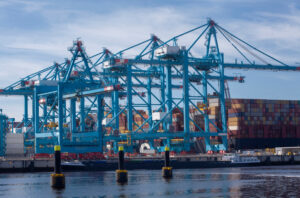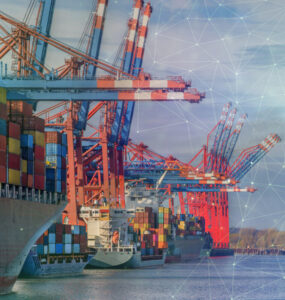Maritime terrorism and piracy are two security threats that can be extremely harmful to global commercial shipping lines, especially if the correct measures are not taken to counter them, since each form of threat can embody different intentions and put carriers at risk for entirely different reasons.
Port security has been the subject of debate for some time, and was covered briefly at the Counter Terror Expo in May, 2015, as well as the Transport Security Expo, both of which took place at the South Kensington Olympia in 2015.
However, as ships become larger, and the volume of containers increases, this puts ships at a much bigger threat of piracy and terrorism; however, the motivations behind each are fundamentally different, since they both have a different aim in mind. So what are the motivations behind attacks on mega containerships?
Peter Cook, Director of the Security Association for the Maritime Industry, argues: “Whilst there is a clear difference between the motivation for piracy and terrorism (piracy being a criminal act is predicated purely on financial gain, whereas terrorism has an ideological aim and is therefore designed to terrorise those involved and affected), it does not necessarily mean that they should be treated exclusively.
“Whilst a pirate is looking at what he can make out of attacking a ship from a business perspective (weighing up the risk v return ratio) a terrorist group will be looking at how they can further their cause by attacking a specific type of vessel, perhaps due to its flag, company of ownership or national/international standing. The terrorist attacks listed above clearly demonstrate that terrorists want a sensational attack and therefore the bigger the better.”
(Source: iStock)
Technical Paper: Port Security and the Effect of Piracy
As well as piracy and terrorist threats, cyber security is also a massive issue within the maritime industry. It is such that cyber security has a fluctuating level of severity within the industry and requires increased focus to effectively deal with potential threats. It is therefore important for shipping lines not to underestimate their exposure to risk and implement the appropriate solutions.
A recent survey from Moore Stephens found that although risk management strategies are satisfactory in the shipping industry, the companies that do not implement sound practices for preventing security threats are at risk or paying a much higher price, with cyber security being one of the most pertinent threats.
Peter Cook elaborates on the main types of cyber security threats facing mega ships: “Cyber-attacks fall into three main categories: a criminal using cyber as the facilitator to commit another crime such as fraud; a targeted cyber-attack when the systems of a shipping company/ship are attacked to get specific data/IP or cause the company to lose business and or revenue or a “Hacktivist” who may target a company for personal gratification (CIA hackers for example).
“Alternatively the cyber-attack maybe directed towards manipulating cargo handling (Antwerp Oct 2013) in order to illegally import/export illegal weapons, narcotics, people etc. There is also significant danger from company employees/crew members unwittingly or purposefully revealing company sensitive information on social media. In summary the threats are many and diverse but can all be overcome if approached in a pragmatic and methodical way.”
Technical Paper: Protecting Ships: The Threat of Hackers
Organisations such as BIMCO are currently working to tackle cyber security threats within the port industry, having recently launched a set of cyber security guidelines to help shipping lines protect themselves from environmental and commercial issues. The guidelines are also aimed at helping shipping lines to take a risk-based approach that is specific to their business.
PTI recently spoke to Gavin Simmonds, Policy Director of Security and Commercial at the UK Chamber of Shipping, where he discusses three main ways in which shipping lines can secure themselves from piracy and terrorism.
“Firstly, by having an active and thorough method of managing security onboard, which is subject to continual review and updating and a crew which is regularly trained, all of this is simply good security management.
“Secondly, threat advice should be obtained and properly considered and information exchanged with national or other military operating in high risk areas, this could also be described as ‘Completing a voyage specific risk assessment’.
“Lastly, the vulnerability of the ship should be reduced by increasing the security of the ship and the ship’s crew by physical and other means, at times this may require the use of additional self-protection measures, protection measures may be passive, for example by the use of short range radar surveillance or thermal imaging devices, or alternatively active measures such as the posting of sentries or guards trained to respond to and repel an attack. The use of a citadel to protect the crew is another important passive measure.”
The bottom line with maritime, piracy and cyber security is that they are all pertinent issues within the commercial shipping industry, with piracy and terrorism taking place for different reasons. Shipping lines can defend themselves from those threats from applying three basic principles: checks on security management, voyage specific assessment, and temporary measures for specific threats.










